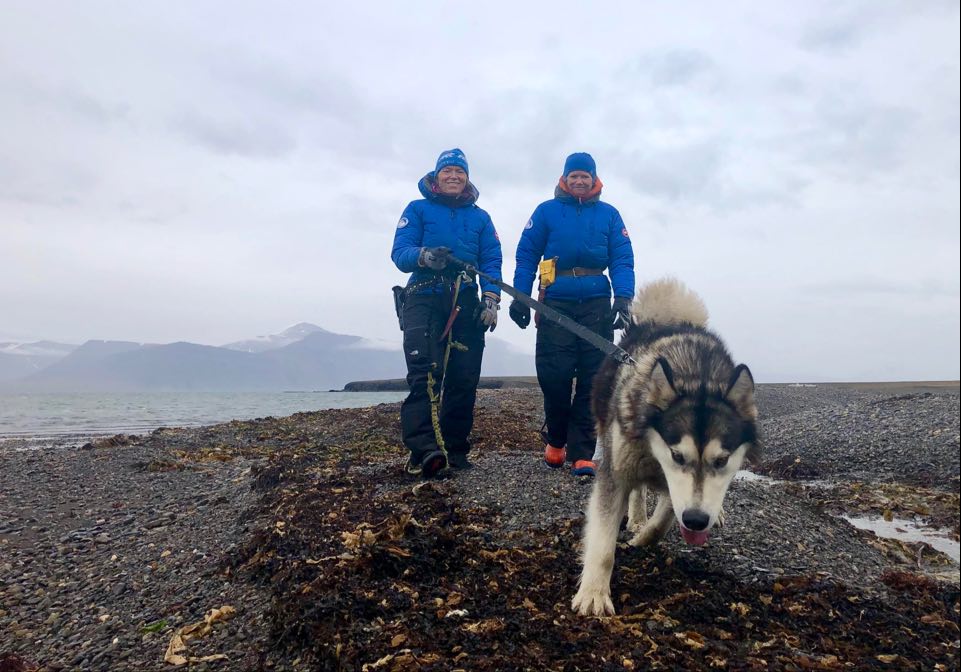I have no hidden talents, I am merely passionately curious.
– Einstein
So much has changed in how we engage with each other, the world around us and how we learn. Especially now with everything online as we spent our week in Longyearbyen on numerous hosted zoom calls bridging the divides between us.
It was much needed time to see family, friends and get caught up. We met online with 30 youth from ‘World Affairs, a group from the Bay area in California, interviewed with Mona for a special BBC Travel article, interview with Hazel for ‘CNN Call to Earth’ a December special on Polar Conservation, a spirited video podcast with Tamara Taggart as part of Telus Talks, several meetings with partners as we seek funding for current and future goals, and our first video call with Jennifer and Barbara – two film producers that we are working with on documentary # 2 that will focus on the power of collaboration to ignite change – especially the network of women that have stood up and supported us.
Emotion triggers action – so what is it that motivates us to change?
When people do not have a science background if they are engaged viscerally to understand change and impact, this can motivate behaviour. We asked each other – what was the catalyst to create Hearts it the Ice? We are not scientists. It was the very fact and intersection of our many years of seeing the ice cover change on glaciers and in the sea ice both in the Arctic and the Antarctic. The time we have spent learning and listening to the experts to explain how and why ice is changing in the polar regions and then emotionally being moved to do something to elevate awareness and inspire people to engage in this crisis.
We collected 16 ice core samples for UNIS between Feb 8th to May 16 2020 with the longest ice core being 81 cm. You can read more about the ice year 2019-20 in this article.
In one square meter of sea ice, there can be up to 40,000 small larvae of benthic animals inside the ice. These small creepy crawlies actively graze on small algae (ice algae) that is seen as a brown layer both inside and on the underside of the sea ice in April and May.
– Janne E. Søreide, Vanessa Pitusi
Science is one way to understand what is happening with climate change – with “Hearts in the Ice “we are adding stories and data through our citizen science projects. When all is analyzed in the coming months perhaps there is a story related to insects, ice, sky, wildlife, our ocean, plastic and water that inspires and motivates someone to action something positive or spark interest and curiosity enough to learn more?
Fairly soon the digital divide will disappear as most have an internet connection and screen. The next thing will be the motivational divide between us all. Our attitudes and values cannot be downloaded, they have to be uploaded the old fashioned way and we suppose that is the best thing that we can actually give our children – a healthy mindset. A lens through which to interpret the world with curiosity. We should not ask our kids – what do you want to be when you grow up? We should instead ask what is your passion and how will you make your passion productive and meaningful?
We downloaded a podcast before coming back to Bamsebu called “Costing the Earth”. The focus was on the different ways we are motivated to change behavior as it relates to climate change. It begs the question – what does climate change feel like, look like, sound like, smell like? There is no “one size fits all”- we all experience it differently depending on where we live and how we are, or are not, impacted.
What about music and art to engage and create change? Researchers have found that things like images of polar bears and melting glaciers doesn’t really change peoples’ actions – they are too distant from one’s daily life. Art and music have a very important role in keeping the topic of climate change alive. We have to appeal to our senses. We can articulate our visual scene but what really motivates people to change is the experience and direct bodily experience. In essence, we have to lose our thinking minds to regain our ‘senses’.
We have big questions on our minds these days as it relates to what we do this coming year. How can we grow our community, add value to our partners, citizen science projects and find new, meaningful ways to engage people around the world? Can we raise enough resources to grow our communication platform?
We are living in a changed world that requires us to be fully alive and engaged.
Let’s do whatever it takes to regain our ‘senses’.
Big hugs from Sunniva and Hilde
Check out:
Joss Stone – New born Song
www.galleripolaris.no and Svalbard artist Kåre Tveter
Ellen Kvam who makes our beautiful Hearts in the ice-necklaces


Once again…you inspire. When I feel hopeless in these days I often take myself back to that magnificent world of ice, rock and sea; the Norwegian arctic is in my soul now…thanks to both of you…it IS a place that is as magical as it is awesome.
I have no doubt you will find a path to keep this place ever present and topical. We …your devoted friends and family are here to cheer you on and lend support when the epiphany of “ what next” comes to you….Always.🇨🇦♥️
What you both do is truly amazing! It will be interesting to see what you decide to do moving forward….stay or back to your individual worlds? So much respect for what has transpired so far, this world crisis has certainly made us looking within ourselves to see how we can initiate and encourage change! Hugs to you both!! 👍😁❤️🇨🇦 🇳🇴